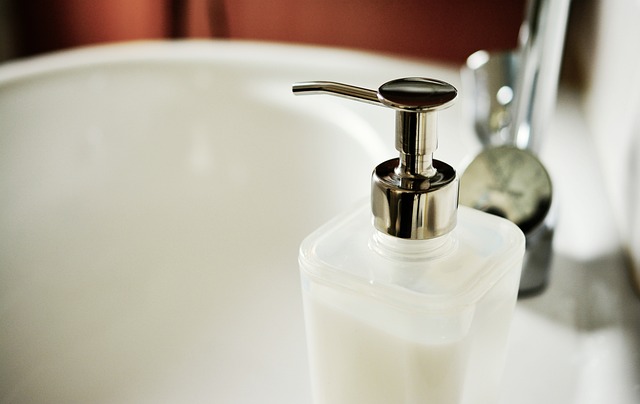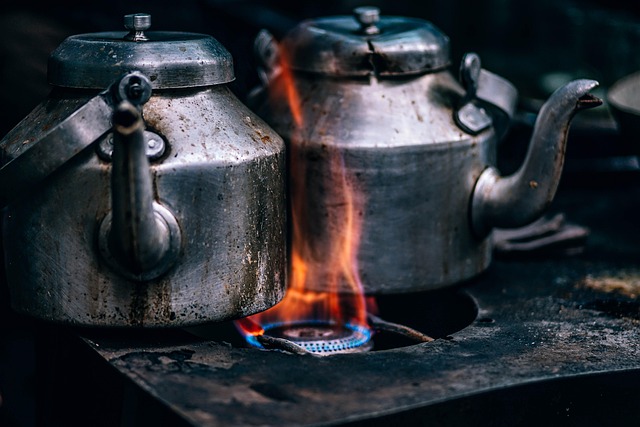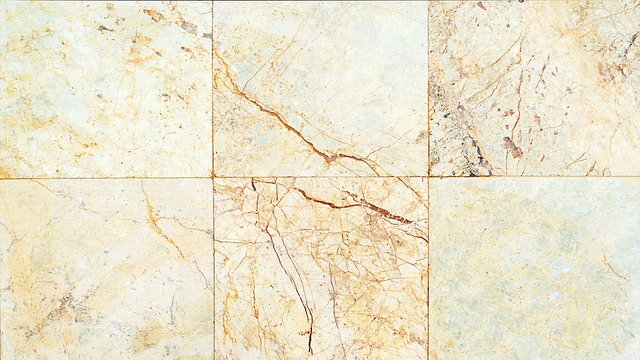Deep tile cleaning is essential in bathrooms and kitchens to remove dirt, grease, bacteria, and prevent mold growth. It involves identifying stains, using suitable cleaners (including natural alternatives), scrubbing, rinsing, and polishing. Regular maintenance includes weekly cleaning with mild detergents or vinegar solutions and annual sealing to protect tiles from water damage and stain absorption. Proper preparation, safety precautions, and thoroughness are key to achieving hygienically clean and visually appealing tile surfaces.
Deep cleaning kitchen tiles is essential for maintaining a hygienic and appealing space. This guide explores the complete process of deep tile cleaning for bathrooms and kitchens, from preparation to protection. Learn effective techniques for removing tough stains, mold, and mildew, and discover the best cleaning solutions tailored for these areas. Additionally, gain insights into long-term maintenance tips to keep your tiles sparkling and prevent future issues.
Understanding the Importance of Deep Cleaning for Tiles

Deep tile cleaning is a crucial aspect of maintaining a hygienic and aesthetically pleasing bathroom or kitchen. These high-traffic areas are prone to dirt, grease, and bacteria buildup due to their constant exposure to water, food, and various contaminants. Regular surface cleaning may not suffice in eliminating deep-seated grime, which can lead to unhygienic conditions and even promote the growth of mould and mildew.
In the case of bathrooms and kitchens, deep tile cleaning involves scrubbing away surface debris and applying powerful disinfectants to reach and eliminate embedded dirt. This process is essential for preventing the spread of germs and creating a clean, safe environment. It also ensures that tiles and grout appear fresh and vibrant, enhancing the overall look of these spaces.
Preparing Your Workspace and Materials

Before you begin deep tile cleaning for bathrooms and kitchens, preparing your workspace is essential. Clear all surfaces and floor spaces to ensure easy access to every corner and crevice. Gather all necessary materials, including a good quality tile cleaner suitable for kitchens and bathrooms, a sponge or soft cloth, a scrub brush with stiff bristles, a garden hose or bucket for rinsing tools, and microfiber cloths for drying. Make sure your workspace is well-ventilated to avoid inhalation of cleaning solution fumes.
Arrange your materials in a designated area, keeping the cleaner within easy reach. Place old towels or drop cloths on the floor around the tiles to protect them from excessive water and cleaner. Consider wearing gloves and protective eyewear for safety during the deep tile cleaning process. With everything prepared, you’re ready to tackle the task of revitalizing your kitchen or bathroom tile surfaces.
Steps to Remove Tough Stains and Gunk

When it comes to deep tile cleaning, especially in high-traffic areas like bathrooms and kitchens, tackling tough stains and gunk requires a systematic approach. Start by identifying the type of stain; whether it’s from grease, soap scum, or food debris. For stubborn grease buildup, apply a mixture of baking soda and water, let it sit for 15 minutes, then scrub with a stiff brush. This simple DIY solution is effective in breaking down oil-based stains without harsh chemicals.
For more persistent marks, like water stains or mineral deposits, create a paste from vinegar and baking soda. Apply the paste to the affected area, allow it to soften the residue, and then gently scrape off with a scraper or old toothbrush. Always test cleaning solutions in a small, inconspicuous area first to ensure they won’t damage or discolour your tiles. Regular deep tile cleaning for bathrooms and kitchens not only improves aesthetics but also prevents hard-to-remove stains from becoming embedded in your flooring over time.
Effective Cleaning Solutions for Kitchen and Bathroom Tiles

When it comes to deep cleaning kitchen and bathroom tiles, choosing the right products is essential for optimal results. For a thorough yet gentle clean, opt for pH-neutral tile cleaners that are free from harsh chemicals. These solutions are effective in removing stubborn stains and grime while preserving the integrity of your tiles and grout.
In addition to conventional tile cleaners, natural alternatives like baking soda and vinegar can be surprisingly powerful. Creating a paste with baking soda and water, or mixing white vinegar with water, offers a safe and eco-friendly way to scrub away dirt and grime. These simple solutions are not only cost-effective but also help in preventing the buildup of mineral deposits, ensuring your tiles stay sparkling clean for longer periods.
Techniques for Removing Mold and Mildew

When it comes to deep tile cleaning, bathrooms and kitchens often require special attention due to their high moisture levels, which can lead to mold and mildew growth. The first step is to identify and address any visible signs of mold or mildew with a mixture of water and mild detergent. For more stubborn stains, a solution of equal parts white vinegar and water can be effective. This natural cleaning agent cuts through grease and grime while also preventing the return of mold by reducing pH levels.
After pre-treating the affected areas, use a scrub brush or sponge to gently agitate the surface. Be sure to wear protective gloves during this process. Rinse thoroughly with hot water to remove any residue, then dry the tiles completely to inhibit further growth. Regular deep tile cleaning for bathrooms and kitchens not only maintains their aesthetic appeal but also plays a crucial role in ensuring a healthy living environment by eliminating potential health hazards associated with mold and mildew.
Restoring Shine and Protecting Your Tiles

After a thorough deep cleaning, restoring the shine of your kitchen tiles involves a simple process of polishing and sealing. Start by using a soft cloth or sponge to buff the tiles, removing any residual dirt and grime from the deep clean. Then, apply a high-quality tile polish designed for bathrooms and kitchens. This step will not only enhance the visual appeal but also create a protective layer that repels stains and makes future cleaning easier.
To maintain the cleanliness and protect your tiles long-term, consider sealing them after polishing. Sealing fills in any pores or crevices, preventing dirt, moisture, and stains from settling in. This is especially important for kitchens, where tiles are constantly exposed to grease, spills, and other kitchen hazards. Regular sealing can extend the life of your tiles and keep them looking their best between deep cleaning sessions.
Tips for Maintaining Clean Tiles Long-Term

Regular maintenance is key to keeping kitchen tiles looking their best over time. After completing a deep tile cleaning for bathrooms and kitchens, establish a consistent cleaning routine to prevent buildup. Use a mild detergent or vinegar solution to wipe away any residual dirt or stains during weekly cleaning sessions. Avoid harsh chemicals that can strip the protective layer of the tiles, as they may cause damage and promote regrowth of bacteria.
Additionally, sealing your tiles annually with a high-quality sealer will safeguard against water damage and stain absorption, ensuring longevity. Quick actions upon spills are crucial; wipe up liquids promptly to prevent stains from setting. This simple step goes a long way in preserving the aesthetics and integrity of your tiled surfaces, requiring minimal effort once implemented as part of your regular cleaning regimen.
Common Mistakes to Avoid During Deep Cleaning

When it comes to deep cleaning kitchen and bathroom tiles, several common mistakes can reduce the effectiveness of your efforts. One of the most frequent errors is neglecting to prepare the space adequately before beginning the cleaning process. This includes not clearing all surfaces, moving furniture away from walls, and protecting nearby floors or countertops with drop cloths or plastic sheeting. Such oversights can lead to water damage and unnecessary messes.
Another mistake is using harsh chemicals without proper ventilation, which can be harmful to both you and your family. Always read product labels and follow safety instructions. Additionally, many people rush the cleaning process, assuming that a quick scrub will yield perfect results. Deep tile cleaning requires patience and attention to detail; skimping on time can result in missed stains or improper disinfection. Remember, thoroughness is key to achieving sparkling, hygienically clean tiles in your bathroom and kitchen.
Conclusion: Keeping Your Tiles Sparkling and Hygienic

Maintaining sparkling and hygienic tiles in your bathroom and kitchen is a simple and regular task that can significantly enhance the overall aesthetics and hygiene of these spaces. Regular mopping and cleaning might seem like enough, but deep tile cleaning for bathrooms and kitchens goes beyond surface-level cleanliness. It involves tackling stains, grime, and even bacteria that can lurk in grout lines and hard-to-reach areas.
By incorporating a consistent deep cleaning routine, you can ensure your tiles stay in pristine condition. This includes using appropriate cleaning solutions, brushes, and techniques tailored to different tile types. Remember to address grout promptly to prevent the build-up of dirt and bacteria. With a little effort and the right tools, keeping your tiles sparkling not only contributes to a pleasant ambiance but also ensures a healthier environment for you and your family.
